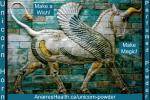Perfume: Unicorn Horn Perfumed Powder
This subtly sparkling scented powder can be used to:
blow a wish
add sparkle and intention to your altar
draw a circle or any shape for the layout of crystals or sacred object
use in a sachet to add a little magic to your drawer, or safekeeping pouch or box...
in a 15mL corked glass bottle.
History of Unicorn Horns: A unicorn horn, also known as an alicorn, is a legendary object whose reality was accepted in Europe and Asia from the earliest recorded times. This "horn" comes from the creature known as a unicorn, also known in the Hebrew Bible as a re'em or wild ox. Many healing powers and antidotal virtues were attributed to the alicorn, making it one of the most expensive and reputable remedies during the Renaissance...
The medicinal efficacy linked to its horn and its alexipharmic powers were assumed to be true in antiquity but were not explicitly mentioned in the West again until the 14th century. Legends about these properties were the stimulus for a flourishing trade in these chips and dust up to the mid-17th century when their true origin became widely known. The alicorn never existed as such; it was most often narwhal teeth that were known as "unicorn horns".
~ from Wikipedia. Here's a whole article called Unicorn horn!
I dreamed this recipe up one night, down to the essential oils.
A magical combination of:
powdered eggshells
diatomaceous earth
Essential oils of:
rosalina
vanilla
ylang ylang
rose petals
silver, gold and violet micas
Mosaic is of the Persian-era unicorn from Apadana (Persepolis), Iran. Unicorns were widely believed to exist in the ancient world, and show up in Greek and Persian texts (sometimes referred to as a monoceros). Writers always assumed them to be living somewhere that the writer had not been. The Apadana Hall in Persepolis, Iran. It belongs to the oldest building phase of the city from the first half of the 6th century BC, as part of the original design by Darius the Great.
Photo of unicorn mosaic thanks to Mohammad.m.nazari, CC BY-SA 4.0
Photos of product copyright Tracey TieF / Anarres Natural Health.





